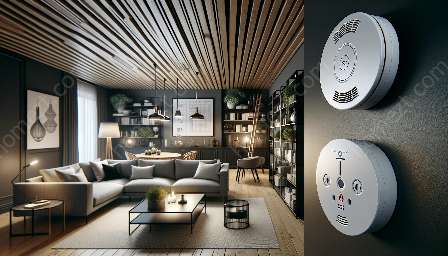Fires can occur in any structure, posing a significant threat to life and property. However, with the proper installation and maintenance of smoke detectors and fire alarms, homeowners can greatly enhance their safety and security. In this comprehensive guide, we will explore the various types of smoke detectors and fire alarms suitable for different structures, including homes, apartments, and commercial buildings. Additionally, we will discuss the importance of regular maintenance and testing to ensure the effectiveness of these life-saving devices.
The Importance of Smoke Detectors and Fire Alarms
Smoke detectors and fire alarms are vital components of a comprehensive home safety and security system. These devices provide early warnings of potential fire hazards, allowing occupants to evacuate safely and promptly, and enabling first responders to be notified in a timely manner. For homeowners, installing smoke detectors and fire alarms is not only a safety measure but also a legal requirement in many jurisdictions.
Types of Smoke Detectors
There are several types of smoke detectors available, each with its own unique features and benefits.
- Ionization Smoke Detectors: These detectors are effective for detecting fast-flaming fires and are commonly used in residential settings.
- Photoelectric Smoke Detectors: Photoelectric detectors are designed to detect smoldering fires and are suitable for areas prone to slow-burning fires, such as kitchens and bedrooms.
- Dual Sensor Smoke Detectors: Combining ionization and photoelectric technologies, dual sensor smoke detectors offer comprehensive fire detection capabilities and are recommended for general use.
Placement of Smoke Detectors
Proper placement of smoke detectors is crucial for their effectiveness. In homes, smoke detectors should be installed in every bedroom, outside each sleeping area, and on every level of the house, including the basement. It is also important to place smoke detectors in areas where fires are most likely to start, such as kitchens and living rooms.
Fire Alarms for Different Structures
For larger structures, such as apartment buildings and commercial properties, fire alarm systems play a critical role in alerting occupants and initiating evacuation procedures. These systems are designed to detect smoke or fire and activate audible and visual alarms to alert building occupants and emergency responders. Additionally, they may be connected to monitoring services to ensure rapid response in the event of an emergency.
Maintenance and Testing
Regular maintenance and testing of smoke detectors and fire alarms are essential to ensure their proper functioning. This includes testing the devices monthly, replacing batteries as needed, and conducting annual inspections by qualified professionals to address any issues and ensure compliance with local regulations.
Conclusion
Smoke detectors and fire alarms are indispensable tools for safeguarding homes and other structures against the devastating effects of fire. By understanding the different types of detectors, proper placement strategies, and the importance of regular maintenance, homeowners and property managers can significantly reduce the risk of fire-related incidents and protect the lives of occupants. Implementing these measures not only enhances safety and security but also provides peace of mind in the face of potential fire hazards.



